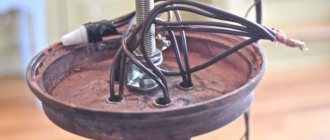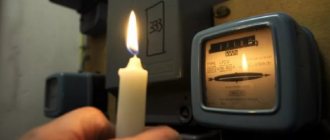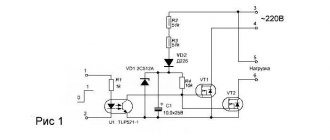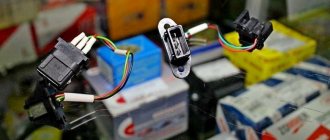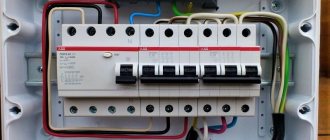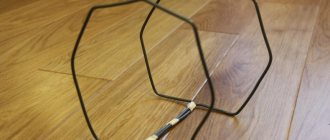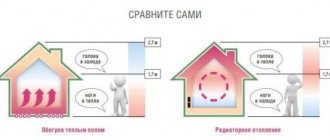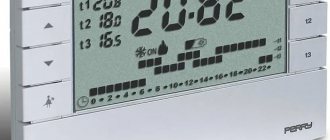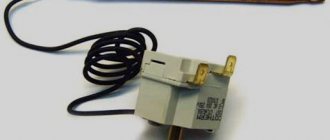An electrode boiler is a direct-acting heating equipment. The coolant in it warms up due to the fact that electric current passes through it. The reason why heating occurs is the movement of ions in water - it is chaotic, the ions oscillate at a frequency of about 50 times per second. What most affects the efficiency of such a boiler is the technical features of the coolant used.
So, heat is released due to the fact that the ions move and is transferred to the coolant. Thanks to this, this type of equipment saves up to 40% energy when compared with other devices of a similar purpose. So, today we will talk about how to make an electrode boiler with your own hands, and also consider the principle of its operation and the main advantages.
In this system, electric current is carried by water, which, accordingly, must be properly prepared. There should be some salt in the water. Salt dissolves in it and brings it to the desired state. The amount of salt that needs to be added is clearly stated in the technical data sheet for the boiler.
- 1 How does an electrode boiler work?
- 2 Video instructions
- 3 Pros and cons of such a boiler
- 4 Materials needed
- 5 Electrode boiler manufacturing technology
- 6 Installation and operating features of the device
- 7 Selection of radiators
- 8 How the boiler will work
Video instruction
As is known, electric current upon contact with water forms hydrolysis, and as a result, hydrolysis gas appears. Such gas will interfere with the normal functioning of the system, so you should periodically vent it.
If the coolant suddenly begins to flow out of the boiler, then there is no need to fear a short circuit, because there is no circuit. In addition, the boiler must be supplied with an autonomous power supply, since when it is activated, a slight voltage surge occurs. When the coolant warms up, the resistance of the conductor decreases, for this reason (we repeat) be sure to add salt and check its amount several times. When the resistance decreases, an arc breakdown may occur (this is practically the same as a short circuit).
Blitz tips
- By organizing space heating using an electrode unit, you can save three times: firstly, on the operation of the device itself due to its efficiency; secondly, on its installation, by doing it yourself, following simple instructions and, thirdly, by constructing it from your own parts. The second and third options allow you to save up to half the cost of constructing a heating system, but do not provide guarantees for the performance and efficiency of the equipment.
- To heat large buildings with several floors, it is recommended to use not 1 heavy-duty expensive heat generator, but 2 or 3 devices connected to each other into 1 heating system.
Pros and cons of such a boiler
An electrode-type boiler has a number of undeniable advantages.
- You can control its operation via the Internet.
- The device operates absolutely silently.
- You get autonomous heating at home.
- The device is environmentally friendly.
- In addition, it is compact.
- There is no need to equip a separate room for it.
- The boiler is relatively inexpensive.
- It is quite easy to install it yourself.
- Finally, if desired, the boiler can provide hot water.
Comparison of the efficiency of ion and heating element boilers
But there are, of course, some disadvantages, let's look at them.
- The power supply is not particularly stable, which negatively affects the operation of the equipment.
- The boiler requires high power electricity.
- The device is not entirely safe from an electrical point of view.
- And electricity itself is expensive.
Well, now let’s move on directly to how you can make an electrode boiler with your own hands.
Read about how to choose the right heating system for your home here
About the coolant used
Electrode boilers do not require a specially prepared coolant; ordinary water can be used for this (provided that its resistivity does not exceed 1.3 kOhm/cm). In this regard, the water still needs some preparation. So, if you simply fill it with distilled water, it will not bring any success, because it does not conduct electricity.
The preparation process consists of conducting experiments, as a result of which the resistance increases (baking soda is used for this, for aluminum appliances - ASO-1) or decreases (melt or rainwater is added).
Prices for the range of electric boilers
Electric boiler
Necessary materials
To make an ion boiler we will definitely need:
- firmness and determination;
- welding, ability to use it;
- iron tee;
- a steel pipe that has the dimensions we need;
- coupling;
- terminal and electrode insulators;
- set of electrodes;
- terminals for grounding and zero.
You may also be interested in an article on how to make a steam generator yourself, read about it here
Conclusion
An electrode boiler is a good solution for dachas and country houses. Its installation does not require permits or a separate room, and its operation does not require increased safety requirements. You can make such a device yourself, but how practical it is is up to you to decide. Although the water heater has a very high efficiency, its use is still much more expensive than the operation of its gas counterpart . It is also worth noting that the ion boiler is demanding on the coolant and heating system. If you do not comply with the mandatory requirements, the device will work ineffectively and will last much less than the stated period.
Electrode boiler manufacturing technology
Now that we have briefly familiarized ourselves with the operating principle of the device, its advantages and disadvantages, we can talk about how to make it yourself. But before you get started, it’s worth familiarizing yourself with a few important points for us.
Note! An electrode boiler must be grounded. Moreover, the neutral wire, which will be supplied to the outer pipe, must be supplied from the socket, and the phase must be supplied only to the electrode.
First stage. The procedure for manufacturing an ion boiler is extremely simple and straightforward. We take a steel pipe approximately 25 centimeters long and with a diameter of no more than 10 centimeters, and insert one or more electrodes into it from one end, using a tee prepared in advance. Actually, it is through this tee that the coolant will subsequently be supplied to the equipment, and also exit back out of it. The second end of the pipe is equipped with a coupling, which is needed to connect heating pipes.
Second phase. Next, we take the insulator and install it between the electrodes and the tee. In addition to its direct responsibility, this insulator will also ensure the tightness of the device. It is best to use heat-resistant plastic as an insulator. Due to the fact that we need in this place not only tightness, but also the ability to connect the electrode and tee via thread, it is advisable to entrust the manufacture of the insulator to craftsmen who, better than anyone, will be able to adhere to all the structural dimensions of the product.
Third stage. We continue to make an electrode boiler with our own hands. It is necessary to weld a massive metal bolt to the body of the device, which will serve us to fasten the grounding, as well as the zero terminal. For greater reliability, you can weld a couple of bolts at once, it won’t hurt. If you wish, you can hide the entire resulting structure with some decorative material, which, by the way, will provide additional protection against electric shock during operation. The fact is that your main priority during manufacturing should be compliance with safety standards, which consist of limiting access to the boiler as much as possible.
Device
Structurally, the electrode boiler is an all-metal pipe with polyamide insulating coating. On the case there are power terminals and coolant input/output (water or other liquid). At one end of the cylinder, electrodes are inserted into the boiler, and the other has an outlet into the heating system.
On the picture:
- 1 - pipe for supplying hot coolant to the external system;
- 2 — steel body;
- 3 - layer of electrically insulating material;
- 4 - coolant heated by current;
- 5 — electrode block;
- 6 - pipe for introducing cold liquid for subsequent heating;
- 7 - insulation and seal;
- 8 - power input.
The composition also usually includes an electronic control unit. There are samples of ready-made automation units for factory boilers on the market; they can also be adapted to a homemade “water heater”.
These boilers received the name “electrode” precisely because of the two electrodes located inside - the anode and the cathode. “Minus” goes to the cathode, and “plus” goes to the anode. When current is applied to the electrodes, the heat-carrying medium heats up and enters external systems. The electrical charge passes directly through the liquid, causing it to quickly become hot.
In industrial boilers, the following device diagram is usually used:
- cylindrical body with a round electrode inside;
- “zero” is connected to this electrode;
- the second contact is the housing itself - the phase is connected to it.
With such a scheme, the case is certainly grounded, for which a ground contact is placed on it. Homemade samples also adhere to this method of manufacturing electrode boilers.
Average parameters of factory products:
- pipe length - up to 60 centimeters, diameter - up to 32 centimeters;
- power - from 2 to 50 kW. The most powerful ones heat rooms up to 1500 square meters. m.;
- the current used is three- or single-phase. The latter operates relatively low-power household appliances, and three-phase current powers productive high-power boilers in commercial buildings, workshops and industrial facilities;
- The ideal temperature of the working fluid is 75 degrees. At this level, optimal energy consumption is established. At a higher temperature, the boiler consumes too much current, and at a low temperature it drops, since as it cools, the thermal conductivity of the medium decreases.
Boilers are divided according to the method of supplying water or other liquid:
- open - the movement of the working fluid is carried out naturally: it leaves the heat generator, transfers heat to the environment and returns back;
- closed - equipped with an expansion pump and tank. The pump provides circulation, and the tank serves for initial heating of the coolant.
Interesting: modern industrial boilers not only have advanced control automation, but are also often equipped with remote control systems and GSM communication modules. Such a device can be controlled via an application from anywhere in the world with Internet access.
Installation and operating features of the device
In order to install an ion boiler in a house, it (that is, your house) must meet some important requirements:
- it must be equipped with automatic air vents;
- safety valve installed;
- pressure gauge
Moreover, after the expansion tank, the so-called shut-off valves must be located.
The electrode boiler must be installed exclusively in a vertical position with your own hands. This rule is dictated by the operating features of this device. Moreover, the boiler must have an independent attachment to the wall surface. The outermost 120 centimeters of the pipeline connected to the boiler must be strictly metal, and in this case there should be no galvanization. The rest of the plumbing can be anything - either metal or plastic.
Now a few words about grounding. To do this, you need to use a copper wire with a diameter of 0.4 millimeters and a resistance of a maximum of 4 ohms. It is connected to the zero voltage terminal, which is often located at the bottom of the heating boiler.
Note! The ion boiler, the manufacture of which we just looked at, can heat up to 120 (!) degrees. No corrosion should occur since the system is closed. By the way, you don’t have to pay much attention to the water quality here either.
Before proceeding with the installation, it is necessary to first flush the entire heating system, using special means (they should also be mentioned in the technical data sheet). If you do poor-quality cleaning, moreover, and use low-quality coolant, then all this will significantly reduce the efficiency of the device.
How to calculate power
The feasibility of installing a heating boiler of one type or another is determined by its operating conditions and the area of the room. Based on these data, the minimum power and operating cost for the heating season or the whole year are calculated.
Power formula: W=We*S (kW);
- W is the optimal power of the heating installation;
- We is the specific power per unit area, depends on the region (southern regions are about 0.05–0.07, northern and central – up to 0.2);
- S – total area (m2);
Additional correction factors can be introduced for different types of buildings and roofs:
- roof without thermal insulation – 0.25;
- no external wall insulation – 0.35;
- drafts or powerful ventilation – 0.15.
These and other amendments are contained in reference literature, as well as relevant GOSTs.
It is important! Having received the required boiler power value, compare it with the maximum possible load on the electrical network in the house. Garage and garden cooperatives have weak networks and are not able to power powerful heating devices.
Selection of radiators
Now a few words about radiators. Their features will depend on the volume of the heating system as a whole, that is, how many liters of water will fit in it. Ideally, for every kilowatt of unit power there should be 8 liters of coolant. If the volume is large, then the boiler will need to work longer to achieve the same temperature, which will only increase your energy costs.
The material from which radiators for our system must be made must be either bimetal or aluminum. The fact is that other metals and alloys have many foreign impurities, which will negatively affect the electrical conductivity of the coolant. If the system is open, then all radiators must be coated from the inside with a special polymer composition, because contact with air accelerates corrosion. Closed systems do not have this disadvantage.
Note! Do not use cast iron radiators under any circumstances, because they also contain a lot of impurities, which not only impairs the efficiency of the boiler, but also increases energy consumption (such radiators have very large volumes).
Principle of operation
Many people are familiar with the simplest boiler circuit - two safety razor blades connected to wires. Such a “heater”, constructed from scrap materials, is dangerous, but is still capable of quickly boiling, for example, a mug of water. It uses the phenomenon of electrolysis: water contains various substances and metal salts, and if current is applied to contacts immersed in water, charged particles will begin to move from one contact to another. In household electrical networks in the Russian Federation, the current frequency is 50 Hertz, therefore, the ions will change direction 50 times per second. This causes heating. The same principle is used by an electrode heating boiler.
The speed at which the operating temperature is reached is affected by the composition of the water: the more salts it contains, the lower the resistance and the faster the movement of charged particles. And Ohm's law states that at a constant voltage, a decrease in resistance causes an increase in current. The conductive properties of water are worse than those of metals used in electrical engineering (aluminum, copper), therefore, as the current increases, it actively heats up. Due to this, the efficiency of electrode boilers is very high: they convert a significant part of the energy supplied to them into heat.
The boiler power is calculated by the formula P=UI, where P is the power in watts, U is the mains voltage (220 V in single-phase networks and 380 in three-phase networks), I is the current in amperes.
Myths about outstanding efficiency
Promotional materials claim that electrode-based boiler equipment extracts thermal energy from the void. Indicators - 120-150% of the applied electrical power. But they completely ignore the laws of physics and heat engineering.
Myth - the conversion of electrical energy by an electrode boiler is many times greater. We focused on the promotion of thermal equipment that was powered by a heat pump with a positive COP coefficient.
You should not believe the statement that electrical energy is 100% converted into heat. Losses are inevitable.
Connection diagram to the heating network
For normal operation, you will need to install a circulation pump, an expansion tank, a special filter and an automation unit. Most often, 3 standard schemes for connecting an electric boiler to a heating circuit are used.
Standard or sequential
The most common concept is in which the coolant is supplied from top to bottom using a pump. Allows you to connect a large number of heating radiators.
The boiler connection diagram is the most common
Parallel circuit
Well suited for small rooms with 1–2 battery sections. Liquid circulation in such a circuit is possible by gravity due to convection. A second boiler or central heating can also be connected.
1 – boiler, 2 – heating system radiators, 3 – expansion tank; 4 – valve for filling/feeding the system from the water supply
Connecting a heated floor
In houses with central or gas heating, low-power electrode boilers are used to heat the floor. This floor retains heat longer and makes the indoor microclimate softer than when using infrared heaters.
You can connect the heated floor to the boiler yourself
Heating water in a hot water supply system involves the use of special 2-circuit boilers, which can also be connected to a general heating system.
Before starting work, the drawing must indicate the number of circuits, locations of heating radiators and the total number of pipes, installation locations of pumps and filters. Provide taps for draining water and filling fluid into the circuit.
What is an overheat sensor
In addition to the draft sensor, there is also an overheat sensor. It is a device that protects water heated by the boiler from boiling, which occurs when the temperature rises above 100 degrees Celsius.
When triggered, such a device turns off the boiler. The overheat sensor only works properly if installed correctly. An increase in water temperature without this device would threaten the failure of the gas boiler.
The overheating sensor monitors the temperature increase in the heating circuit. It is installed at the outlet of the heating circuit heat exchanger. When the critical temperature is reached, it opens the contacts and turns off the boiler.
Reasons for triggering the overheating sensor:
- Such a device can work if the water in the column heats up too much;
- If the sensor contact is poor;
- Due to its malfunction;
- If the sensor has poor contact with the pipe.
In order to make the heating sensor more sensitive, heat-conducting paste is used. When overheating, the sensor blocks the operation of the boiler. Modern devices are able to indicate a fault code on the display.
Advantages of installations
Energy-saving installations for water heating are just beginning to gain popularity among Russians; they have appeared on the heating equipment market too recently. Of interest are high technical characteristics, environmental safety, autonomy, reliability, efficiency, and compactness.
- The efficiency of the EOU is 98% when two devices operate simultaneously in the heating system;
- the heating level is controlled by special temperature sensors;
- compact size and neat appearance;
- instant heating of the liquid in the chamber;
- there is no need to coordinate installation and subsequent operation with Gostekhnadzor authorities;
- significantly save owners money during the heating season;
- The guaranteed service life is 10 years, the operating period declared by the manufacturers is 30 years.
Consequences of electrolysis, direct action of current
During the operation of the hydrolysis solution, water breaks down into hydrogen and oxygen, leading to the formation of air pockets. Does not allow fluid to circulate normally within the system.
Some users have found traces of corrosion on aluminum radiators - a consequence of electrochemical exposure.
If you install cast iron radiators in the heating system, the quality of the coolant will change for the worse. Distilled water washes out impurities from the pores of cast iron. An electrode boiler requires the installation of bimetallic structures.
The liquid in the system is under constant influence of current; grounding is required. The process is complex and not possible on all types of heating systems.
You can install a clamp on a steel pipe if the system consists of cast iron radiators and plastic pipes - a process that is practically impossible to solve.
Savings from using EOU
Energy-saving heating systems comply with all environmental and fire safety standards, operate silently, without emitting substances harmful to human health.
The use of EOU allows you to optimize the consumption of electrical energy, and where rationalism operates, the family budget is saved. Thermostats installed in each room allow you to regulate the temperature within the range from 5 to 30 °C. When the temperature drops by just 1-2 degrees, electricity costs are reduced by 5-6%. A more flexible approach to temperature control throughout the entire house will achieve 35-50% savings.
If desired, you can program any temperature schedule for a heating system with an EOC, according to which the automation will turn off one or a group of rooms.
Reliable electric boilers for home heating at 220 volts
When preparing the rating of the best household electric boilers 220, a considerable number of various factors were taken into account - the company, power, the possibility of simultaneous supply of heat for heating and hot water supply, the highly economical process of obtaining energy.
Among the best cheap 220V wall-mounted boilers are:
- EVAN Warmos-IV-5. A budget device made in Russia, with a wide range of functionality. Despite its low power of 5 kW, the boiler works very well in a “warm floor” system, and the “anti-freeze” function makes it indispensable for private houses with an area of up to 60 m2, which can be heated shortly before the arrival of residents. As of November 1, 2019, the price of the unit is 15,520 rubles.
- RusNIT 209K electric boilers made in Russia, with designs well adapted to rural living conditions. A boiler with 100% automation of the technological process, smooth adjustment of the heating water temperature in the range from 40 C to 80 C, is capable of efficiently and quickly heating a room area of up to 100 m2. As of November 1, 2019, the price of the unit is 12,890 rubles.
- Thermotrust ST 9 is the best price of the Swedish brand with full assembly in Russia. The 9 kW model is designed for connection to a 220 V household power supply and operates with an efficiency above 93.0%. Despite its budget price, the generator is equipped with block stainless heating elements. As of November 1, 2019, the price of the unit is 11,814 rubles.
The best wall-mounted electric boilers according to the “price-quality” criterion
- Protherm slope 9 kr 13 is new for 2022. Slovak device with soft start and fully automatic process safety. A wide range of powers from 6 to 28 kW, which makes it possible to create a different heating system for an individual house or apartment, using them as the main or backup source of heat supply. It is possible to connect various components to them for control, accumulation and exchange of information - electronic temperature sensors, programmers, solenoid valves and devices for using a diphtariff meter in order to use cheap electricity at night. As of November 1, 2019, the price of the unit is RUB 32,340.
- Vaillanteloblockve 9 is a very stylish heat generator from Germany. All control is performed with one button, and the information is sent to a two-segment monitor. Directly under the glossy protective casing, a powerful potential is hidden - a heating output of 9 kW. As of November 1, 2019, the price of the unit is RUB 37,709.
- STOUT SEB-0001-000018. These boilers from a Russian manufacturer provide the best price-function ratio and are capable of heating a house up to 200 m2. It is thanks to the integrated synoptic thermostat that it is possible to optimize the temperature regime, thereby reducing the specific costs of electrical energy consumption. As of November 1, 2019, the price of the unit is 34,900 rubles.
The electric boiler market is slowly, but still increasing its momentum
To date, consumers have been wary of this choice. In addition, there are many rumors that the devices are expensive and often break down.
This may have been true at the dawn of their development, but today the technology for their production has made great strides forward, leaving many of the shortcomings of the first models behind.
The main options for modern electric boilers
There is more than one design option for a boiler for electric heating. The simplest is the built-in heating element
It is necessary to pay attention to the pipe where the heating element is mounted. It must be removable; as for the diameter, it is better if it is larger than other similar elements. A removable pipe is required for repair work if the heating element fails
In addition, a pipe that has a built-in heating element can be classified as a special compact boiler. It is worth noting that this system has high efficiency indicators
A removable pipe is required to carry out repair work if the heating element fails. In addition, a pipe that has a built-in heating element can be classified as a special compact boiler. It is worth noting that this system has high efficiency indicators.
Important! For this reason, it is recommended to avoid all unnecessary expenses, but to achieve the use of the entire system by all possible means. You can simply make a small-sized, free-standing boiler. Equipment of this type can be made from a special steel pipe
Here, the smaller the boiler, the more efficiently it will carry out its work. There is no need to heat excess water and, accordingly, waste a large amount of kilowatts of energy
Equipment of this type can be made from a special steel pipe. Here, the smaller the boiler, the more efficiently it will carry out its work. There is no need to heat excess water and, accordingly, waste a large amount of kilowatts of energy.
To effectively heat a relatively small house of two or three rooms, it is enough to take a pipe element whose diameter is 220 mm, and the length should be only half a meter.
The pipe must be hermetically sealed on both sides with special steel caps. In this case, it is necessary to make a special hole in the upper element, which will be intended for connecting the outlet pipe. This pipe will transport hot water to the installed radiators. In the lower element of the constructed boiler, exactly the same hole is made on one of its sides, then a pipe will be connected there, but with cool water.
For such a design, you can use a heating element with power parameters of 1 kW. It provides heating from a standard 220 Volt network. As for the heating element itself, it can be quickly installed in the lid of the new boiler located below or on one of the sides. The main thing is that this is the side located on the other side of the pipe; cold water usually enters it.
Important! An electric boiler of this type is able to operate around the clock. If you install additional automatic equipment in its design, you can easily maintain the required temperature regime. By the way, it is usually set using a special regulator
By the way, it is usually set using a special regulator.
Installation of a regulator is mandatory, since it is the one that can effectively protect the equipment from overheating. In addition, mounted automation provides an optimal opportunity to save material resources on the total amount of energy consumed.
The main options for modern electric boilers
There is more than one design option for a boiler for electric heating. The simplest is the built-in heating element
It is necessary to pay attention to the pipe where the heating element is mounted. It must be of the removable category; as for the diameter, it is better if it is larger than other similar elements
A removable pipe is required to carry out repair work if the heating element fails. In addition, a pipe that has a built-in heating element can be classified as a special compact boiler. It is worth noting that this system has high efficiency indicators.
Important! For this reason, it is recommended to avoid all unnecessary expenses, but to achieve the use of the entire system by all possible means. You can simply make a small, free-standing boiler
Equipment of this type can be made from a special steel pipe. Here, the smaller the boiler, the more efficiently it will carry out its work. There is no need to heat excess water and, accordingly, waste a large amount of kilowatts of energy.
To effectively heat a relatively small house of two or three rooms, it is enough to take a pipe element whose diameter is 220 mm, and the length should be only half a meter.
The pipe must be hermetically sealed on both sides with special steel caps. In this case, it is necessary to make a special hole in the upper element, which will be intended for connecting the outlet pipe. This pipe will transport hot water to the installed radiators. In the lower element of the constructed boiler, exactly the same hole is made on one of its sides, then a pipe will be connected there, but with cool water.
For such a design, you can use a heating element with power parameters of 1 kW. It provides heating from a standard 220 Volt network. As for the heating element itself, it can be quickly installed in the lid of the new boiler located below or on one of the sides. The main thing is that this is the side located on the other side of the pipe; cold water usually enters it.
Important! An electric boiler of this type is able to operate around the clock. If you install additional automatic equipment in its design, you can easily maintain the required temperature conditions
By the way, it is usually set using a special regulator.
Installation of a regulator is mandatory, since it is the one that can effectively protect the equipment from overheating. In addition, mounted automation provides an optimal opportunity to save material resources on the total amount of energy consumed.
We assemble an electric boiler with our own hands
If you are going to make an electric boiler with your own hands, you will find drawings and operating principles in our review. Before assembly, make sure you have the necessary tools and equipment. First, let's understand the operating principles of electrode boilers - there is nothing complicated about them, the technology is simple and proven.
The operating principle of a heating element boiler is quite simple; the heating element heats the water that comes into direct contact with it.
In classic electric boilers, the heating medium is heated using heating elements with or without a thermostat. The heating elements are somewhat slow - a lot of time passes from switching on to reaching operating mode. In addition, they are unsafe, as fires often occur due to their fault. In standard boilers, heating elements are located inside a small-diameter pipe through which the coolant passes - it heats up and heats the heating system.
Also in the design of heating element boilers there are temperature sensors that determine the degree of heating of the coolant - adjustments are made using them. Another control method is possible, using an air temperature sensor. Both types of sensors are connected to external automation systems responsible for starting and stopping equipment.
Description of the operating principle
The operating principle of electrode boilers is different:
Electrode boilers heat water using ions formed in the water as a result of alternating current being supplied to the electrodes.
- Instead of heating elements, one or three electrodes are located in the pipe (for single-phase or three-phase boilers);
- When electricity is supplied, ion exchange begins in the pipe;
- The coolant heats up and transfers heat to pipes and radiators.
Many of our readers are familiar with the military boiler, which consists of two razor blades and two wires. It quickly warms the water, after which it is used for making tea and other food needs. But this boiler consumes a huge amount of electricity - its operation often triggers the RCD in the panel. A similar principle is used in electrode boilers.
In order for the electrode boiler to work more efficiently, salt, soda or special additives are added to the coolant. They increase the electrical conductivity of water and improve heating of the system.
Electrode boiler assembly
Scheme of a simple electrode boiler for heating systems.
Now we will try to assemble an electric boiler for heating a house with our own hands. With the indicated dimensions of the pipe used, we will get a device whose power will be about 4-5 kW - this is enough to heat rooms up to 40-50 square meters. m. We take the pipe and begin to inspect it - it should be intact, without cracks or traces of rust. If there is rust, it should be removed with fine sandpaper.
We weld two bolts to the pipe - zero and ground will be connected to them. Thus, the pipe body will become our outer electrode. Next, we weld the inlet and outlet pipes - they will serve to connect to the heating system. The inlet pipe is located at the bottom, and the outlet pipe is located at the top. The top cover can be welded, or you can make an internal thread in the pipe and make the cover removable.
The removable top cover will ensure ease of maintenance of the boiler - it is likely that in the future it will have to be cleaned of accumulated salts and slags. If you don’t want to deal with removable covers, then you can weld them.
When assembling the electrode boiler, be careful not to allow the electrodes to come into contact with each other.
The most difficult thing is to make the bottom cover and insert the electrode into it. We recommend making the cover removable so that the electrode can be easily removed and replaced. The internal electrode should not come into contact with the internal walls or the cover itself. To create insulation, you should use ready-made insulators made of fiberglass or fluoroplastic. The procedure may seem labor-intensive, but if the assembler has “straight hands”, he will cope with this task.
Both covers, top and bottom, should be sealed with rubber gaskets. The length of the internal electrode should be such that it does not touch the opposite wall (aka the top cover).
